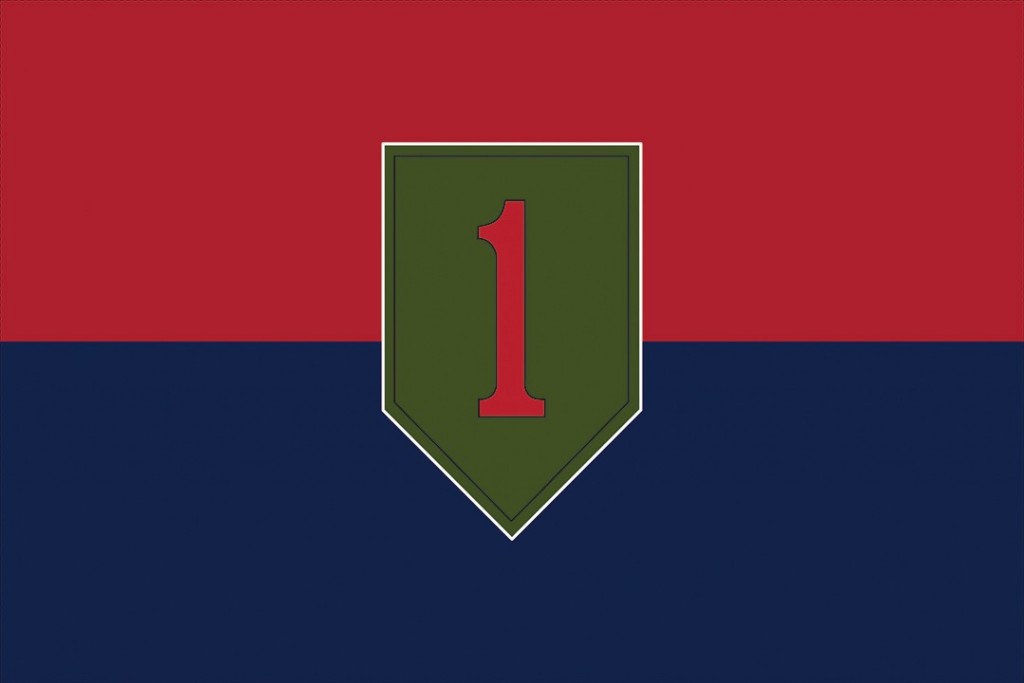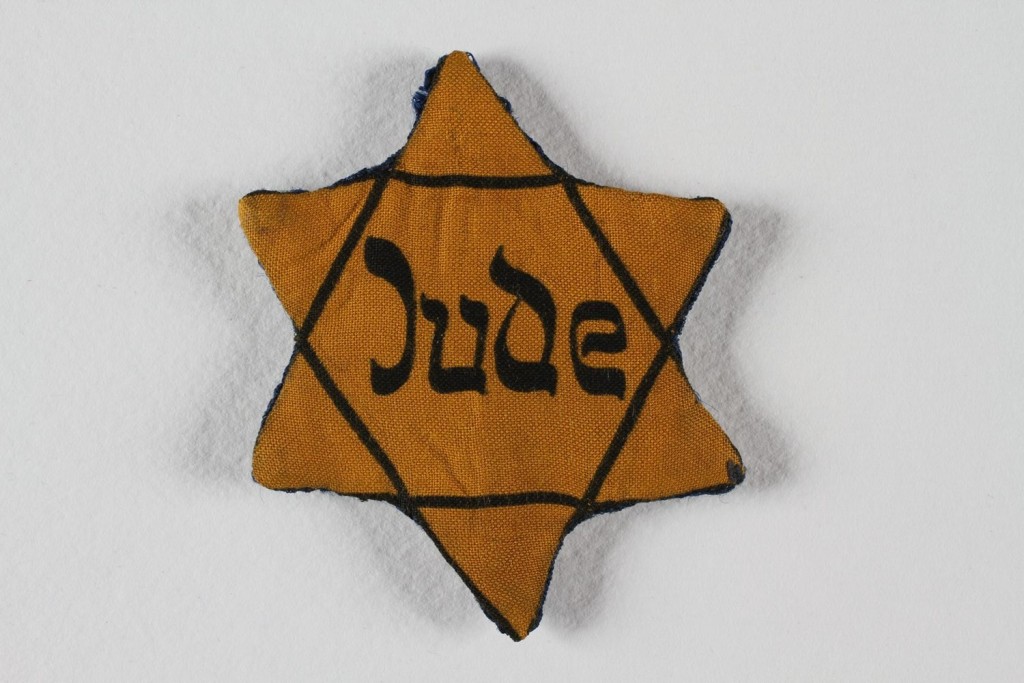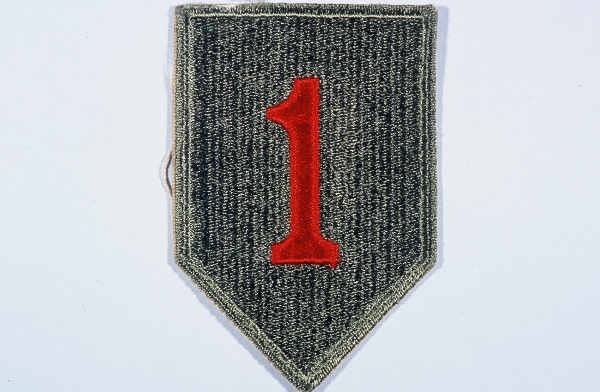
The 1st Infantry Division during World War II
In 1985, the United States Holocaust Memorial Museum and the US Army Center of Military History began a program to honor US Army divisions that took part in the Allied liberation of Nazi camps. The US Army Center of Military History defines a liberating division as one whose official records show its presence at a camp within 48 hours of the first soldier’s arrival. The 1st Infantry Division is among the 36 US divisions that have been recognized to date.
Key Facts
-
1
US, British, Soviet, and Canadian troops encountered concentration camps and other sites of Nazi crimes as they advanced across Europe in 1944 and 1945.
-
2
The Allied soldiers liberated sick and starving camp prisoners from Nazi tyranny. They also provided them with food, clothing, and medical aid.
-
3
The United States Holocaust Memorial Museum and the US Army Center of Military History have recognized 36 US divisions for their role in the liberation of Nazi camps.
The 1st Infantry Division During World War I
The 1st Infantry Division (nicknamed “The Big Red One”) was formed in 1917, after the United States entered World War I (1914–1918). It is the oldest continuously serving division in the US Army. As part of the Allied Expeditionary Forces, it fought against the German army in France between June 1917 and November 1918. After World War I, the division occupied the area around Koblenz, Germany, before returning to the United States in September 1919.
The 1st Infantry Division Campaigns During World War II
During World War II (1939–1945), “The Big Red One" left the United States in August 1942 to train in Great Britain and Scotland. The division took part in the Allied invasion of North Africa in November 1942, driving Axis forces from the continent in 1943. In July of that year, 1st Infantry Division forces invaded and occupied the island of Sicily, Italy, before returning to the United Kingdom in October.
On June 6, 1944, the 1st Infantry Division landed on Omaha Beach in Normandy, France, as part of the D-Day invasion (the Allied invasion of western Europe). “The Big Red One” later moved through France, Belgium, and Germany. It crossed the Siegfried Line in September 1944 and captured the German city of Aachen in late October.
During the Battle of the Bulge in December 1944, the 1st Infantry Division countered the German assault. The “Big Red One” then reentered Germany, captured the city of Bonn, and crossed the Rhine River on March 16, 1945. When the war in Europe ended on May 8, 1945, the 1st Infantry Division (which had joined with the 9th Armored Division) was fighting the German army between the towns of Falkenau an der Eger (in Czech, Falknov nad Ohří; today Sokolov) and Cheb in present-day Czech Republic.
The 1st Infantry Division and the Liberation of the Zwodau Subcamp
On May 7, 1945, troops of the 1st Infantry Division, along with soldiers from the 9th Armored Division, liberated Zwodau. Zwodau was a subcamp of the Flossenbürg concentration camp.
Location of the Zwodau Subcamp
The Zwodau subcamp was located in the small town of Zwodau (in Czech, Svatava) about 10 miles southwest of Karlsbad (in Czech, Karlovy Vary) in the Sudetenland. The Sudetenland was a region of Czechoslovakia that had been annexed by Nazi Germany in fall 1938 in accordance with the Munich Agreement. Today this area is part of the Czech Republic. The nearest larger town to Zwodau was Falkenau an der Eger.
History of the Zwodau Subcamp
SS authorities established the Zwodau subcamp in 1944. The first inmates were non-Jewish female prisoners sent from the Ravensbrück concentration camp. These first prisoners were forced to build the barracks and other camp infrastructure. Eventually, a number of Jewish women from Hungary were also imprisoned in Zwodau. Prisoners in the subcamp were forced to work in factories producing airplane equipment for the German war effort. For most of its history, the prisoner population of this subcamp numbered in the hundreds.
In spring 1945, Zwodau became increasingly overcrowded. At this time, the SS was evacuating prisoners from other camps in the vicinity on death marches. Many of these marches were directed towards Zwodau, which was farther from the front lines. Some death marches stopped briefly in Zwodau before continuing on to other camps. Others remained there. In April 1945, the prisoner population reached between 2,500 and 3,000. Many of the new prisoners were Jewish women. In the final weeks of the camp's operation, the death rate among prisoners rapidly increased due to the lack of food and water and the spread of disease.
The SS attempted to evacuate and dismantle Zwodau in late April 1945. Around April 20, they forced the prisoners on a march, only to turn them back several days later. The prisoners returned to a camp that was mostly demolished.
When American troops liberated the Zwodau subcamp in early May 1945, they found the prisoners in very poor physical condition. Troops also encountered a number of other prisoners in the region around Falkenau an der Eger, including prisoners of war.
A US Soldier Writes Home
One of the soldiers who helped liberate Zwodau’s prisoners was John Hein. Hein was a German-born Jewish soldier who served as an interpreter in the 1st Infantry Division. On May 8, 1945, he wrote a letter to his parents recording his impressions of the camp’s liberation:
I am writing you today chiefly to tell you about yesterday afternoon. It was one of the most memorable events of my career as an interpreter and made me really proud of being a Jew.
Around noon our armored spearheads had liberated a labor-camp and about four o'clock the captain and I rode down. When we got there, we found that it was a camp near an ammunition factory, surrounded by barbed wire (which had been charged with electricity), and contained over 1,000 French, Polish and Russian women and girls, of practically all ages. They were still standing around numb and dazed, too surprised to comprehend fully the change that had taken place in their fortunes…
Hein spoke with the freed Jewish prisoners and informed them that he too was Jewish. They told him their stories and how they got to Zwodau:
I was told that all the Jewish girls in the camp … had come only a few months ago from the horror camp of Auschwitz in Poland. I didn’t remember that name, but they said it was much worse than the infamous Maidanek, near Lublin. All their parents and sisters and brothers, and some of their husbands, had been burned in the furnaces there, and they had only escaped that fate because the camp was evacuated, when the Russian army got close.
They simply could not believe that there was a Jew, alive and healthy, standing before them…
One of the women gave Hein her Star of David badge, marked with the word “Jude” (Jew), that the Nazis had forced her to wear. In 1988, Hein donated the badge to the United States Holocaust Memorial Museum.

American Film Footage of Falkenau an der Eger after Liberation
On May 9, 1945, Sam Fuller, a member of the 1st Infantry Division, filmed the aftermath of liberation in the town of Falkenau an der Eger. Specifically, he recorded the burial of prisoners from what he called the “Falkenau concentration camp.” This name is likely incorrect. At the time of liberation, there was no existing concentration camp by this name. The only subcamp or concentration camp in the area was Zwodau. But, because the bodies Fuller filmed were male, these prisoners were probably not from the Zwodau subcamp (where the prisoners were women). Scholarship suggests that Fuller likely filmed the bodies of Soviet POWS who had been imprisoned in a German prisoner of war camp located in or around the town of Falkenau an der Eger.
Recognition as a Liberating Division
The 1st Infantry Division was recognized as a liberating unit by the US Army's Center of Military History and the United States Holocaust Memorial Museum in 1993.
1st Infantry Division Battle Casualty Figures
Hundreds of thousands of US servicemen and women died or were wounded in the fight against Nazi tyranny.
The total number of battle casualties for the 1st Infantry Division in the European Theater of Operations and the Mediterranean Theater of Operations during World War II was 20,659. In this case, “battle casualties” includes all personnel who were unable to fight in battle because they were wounded, missing, captured, or killed.
Among the battle casualties suffered by the 1st Infantry Division, there were 4,365 deaths.
1st Infantry Division Nickname and Insignia
The 1st Infantry Division's nickname, “The Big Red One,” originated from the division's insignia or patch: a large red number "1" against a military green-colored background. The 1st Infantry Division was also known by the nickname “The Fighting First.” During World War I, the 1st Infantry was the first American division to arrive in France in 1917. It also won the first American victory during World War I at the Battle of Cantigny (May 1918) north of Paris. The division’s motto was “Duty First.”

Footnotes
-
Footnote reference1.
In the aftermath of World War II, the US Department of the Army compiled casualty figures for US Army personnel. The US government published these figures in 1953. The report listed casualty numbers for the US Army for the period from December 7, 1941 (Pearl Harbor) through December 31, 1946, when US President Harry S. Truman officially declared the end of war hostilities. Army Battle Casualties and Nonbattle Deaths: Final Report, 7 December 1941-31 December 1946, Prepared by the Statistical and Accounting Branch, Office of the Adjutant General, Under the Direction of the Program Review and Analysis, Division of the Comptroller of the Army, O.C.S., (Washington: Department of the Army, 1953), p. 3–4, 84–89.
Critical Thinking Questions
What challenges did Allied forces face when they encountered the camps and sites of other atrocities?
What challenges faced survivors of the Holocaust upon liberation?

